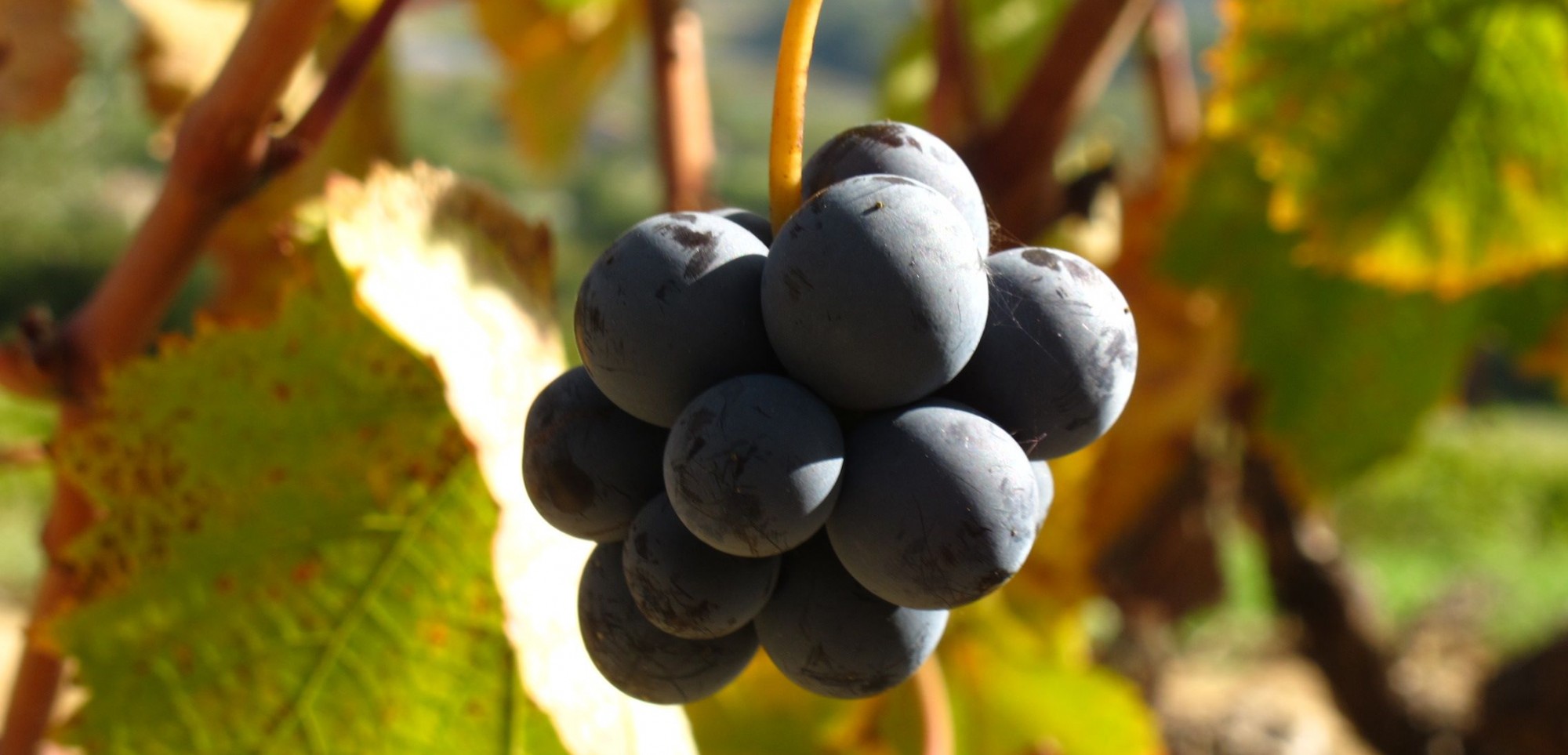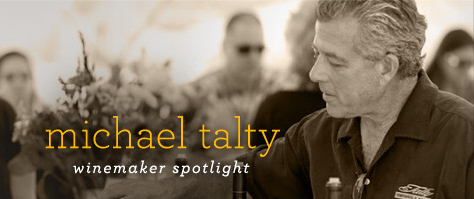Spotlight: Talty Vineyards & Winery, Sonoma, CA
Here’s a tip for creating perfect food and wine pairings – make the wine yourself, and tune it to your own palate. OK, most people don’t have this option. But Michael Talty’s foray into the wine industry, from admirer of Zin to a master of the grape, is proof positive that it can be done. Today, he is proprietor and winemaker of Talty Vineyards & Winery.
I can’t think of many winemakers who came to the business with more of an outsider status than Michael. He told me with pride, “I’ve done this all on my own.” He did not apprentice under a seasoned pro, nor did he hone his skills via tasting through the Old World’s great wine regions. Being a family man and having changed careers at 40, he simply hasn’t had the time to travel to any other wine regions other than those close to his Dry Creek backyard.
The idea of becoming a winemaker first occurred to Michael during his weekend cooking sessions with his late father, William Talty, for whom he eventually named his vineyard. As he was enjoying a glass of wine with the food they prepared, he thought, “If I can cook, I’ll bet you I can make wine.” From there, it was off to his garage where he made several vintages, experimenting with native yeasts and blending his Zinfandels with varying amounts of Carignan and Petite Sirah. Along the way, he purchased a 6-acre Zinfandel vineyard and took extension courses in enology and viticulture at UC Davis. In 2001, he took the plunge and became a full-time vintner, releasing a portfolio of three wines: a Zin from his estate-grown grapes, a Cabernet and a Chardonnay. Today, he focuses solely on Zinfandel.
I recently chatted with Michael, who speaks in a charmingly casual cadence, to get insights into his winemaking process. I came away amazed with his ability to glean what he needed from textbooks, but still forge his own winemaking path.
How were your years as a garagiste?
My first two vintages were horrible. The wine tasted fairly good in the bottle, but as it aged it progressively got worse. Back then, I was learning how to make wine only by reading books from local shops. Then someone said, “You need to go to the UC Davis bookstore.”
I went there and bought three books at various levels of discussion on winemaking, the first being very simple, the second started talking about chemistry. But somehow, I had never taken chemistry. So the data and information in that book was way over my head.
At the bookstore, I was exposed to the extension program and decided to take courses. The first one I took was Wine Chemistry. I think I took it twice. But after this class, my wines truly improved. They became fresher and were not going through spoilage.
Based on what you learned at Davis, what did you do differently in your garage?
You can put a bucket of grapes that you just harvested in the sun. And it will turn into wine. And the next thing it’ll turn into is vinegar. The goal of winemaking is to create the wine and not let it have any spoilage. This is achieved through chemistry. Specifically having proper SO2 levels in the wine. At Davis they are very conservative with their recommended amounts of SO2 to keep a wine fresh – their suggestions are very high and therefore totally certain. But this is what gives people headaches. So what I learned is to have the right amount but not have extremely high levels.
So that’s how your winemaking improved. What was your process for becoming a better grape grower?
Once I went through the enology program at Davis, I went through their viticulture program. I’m glad I learned the foundational aspects about tonnage, fertilization and watering. But I realized that I wanted to farm like a winemaker, not like a grape grower. I want to create flavorful grapes, not quantities of grapes. So I practice non-irrigation in my vineyard.
Do you ever run out there with a hose in bad years?
I can get away with not watering because my vines are old – almost 50 years old with deep-rooted systems. They are on a drought resistant rootstock, St. George. I’ve had a year when irrigation was an issue, and I’ve had major crop damage because of heat. But generally I can manage the crop load without irrigation. I’m in the vineyard four weeks before harvest, I’m out there every other day tasting, watching the weather. You’ve got to roll with what’s happening.
Why did you choose to focus on Zinfandel?
It started with my father exposing me to drinking Zin, and I found that it was really enjoyable with or without food.
Your Zins are very food-friendly, though.
To tell you the truth, the acidic balance of my wines is not truly focused on pairing with food, at least in the creation process – it was focusing on achieving a long, lingering finish.
Knowing you as a Zinfandel specialist, I was surprised to hear that you made Cab and Chardonnay your first year. Do you miss them?
I don’t miss making Chardonnay because I really don’t like white wine. I’ve found in my evolution that when I was passionate about what I was making, I had much more success. And my basis for that is really about passion, not necessarily satisfying the market.
Your Zins are lighter in color and more medium-bodied than most, with lower levels of alcohol. Have you ever thought about making a bigger style of Zin?
The wine I make is the wine I love. I’m very fortunate to have the opportunity to make my wine instead of working for some winery. I’ve talked to other winemakers who say, “You don’t know how lucky you are. I have protocol to follow.” Part of the reason my wines are medium-bodied is how I ferment them – at a lower temperature and use all native yeast. I ferment in open-top bins, single-walled, all hand punch-down – just like I did in my garage!
I don’t do a lot of blending. A lot of Zins have Petite Sirah, which adds a lot of color. My goal is not color. My goal is flavor and balance. In my estate Zin, I used 7 percent Petite Sirah. If I put 8 percent in there, it starts turning into table wine and losing its Zin character.
What foods would you pair with your 2006 Estate Zin and 2007 Dwight Vineyards Zin?
People ask me this all the time. I would say my favorite thing with Estate is lamb. The Dwight is a lighter style and pairs better with lighter foods. But to tell you the truth, every time I have my wine, it goes with everything I eat!


My brother is Michael talty. Our dad was william talty. What a small world–Ron Talty